What to know about Undercounter Ice Machines by Joe Szabo, Scottsdale Real Estate Team
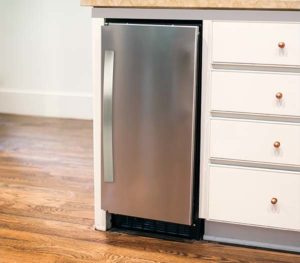 Do you find yourself regularly running out of ice when you have guests over? Stocking up on extra bagged ice is a pain, and those bags will quickly fill up the freezer space you have. Having to supplement the amount of ice your freezer makes is inconvenient and it gets expensive. If it’s a problem you face with any frequency at all, buying a separate ice machine is worth it.
Undercounter ice machines, sometimes called built-in ice machines, are designed to fit seamlessly into your kitchen without taking up any floor space. These are installed directly into your cabinetry, just like a dishwasher or cooking range.
Families that go through ice at a quick pace can buy these machines for their home and integrate them right into their kitchen. Offices, churches, and anywhere else where lots of people are likely to gather and need ice, can also benefit from a built-in ice maker. If the demand for ice is ongoing, such as in a restaurant or hotel, you may be better off with a commercial ice machine that is designed for high-capacity production.
If a built-in ice maker sounds like a good fit for you and your lifestyle, there are a few things you should know before buying one. The below guide will help give you a better idea of the best brands out there, as well as some of the main factors you should consider while browsing your options.
Do you find yourself regularly running out of ice when you have guests over? Stocking up on extra bagged ice is a pain, and those bags will quickly fill up the freezer space you have. Having to supplement the amount of ice your freezer makes is inconvenient and it gets expensive. If it’s a problem you face with any frequency at all, buying a separate ice machine is worth it.
Undercounter ice machines, sometimes called built-in ice machines, are designed to fit seamlessly into your kitchen without taking up any floor space. These are installed directly into your cabinetry, just like a dishwasher or cooking range.
Families that go through ice at a quick pace can buy these machines for their home and integrate them right into their kitchen. Offices, churches, and anywhere else where lots of people are likely to gather and need ice, can also benefit from a built-in ice maker. If the demand for ice is ongoing, such as in a restaurant or hotel, you may be better off with a commercial ice machine that is designed for high-capacity production.
If a built-in ice maker sounds like a good fit for you and your lifestyle, there are a few things you should know before buying one. The below guide will help give you a better idea of the best brands out there, as well as some of the main factors you should consider while browsing your options.
Factors to Consider When Buying an Undercounter Ice Maker
To make sure you end up with the best undercounter ice maker that will meet all of your needs, we would strongly recommend that you consider each of these main factors.Placement
The main reason to pick an undercounter ice maker rather than a portable model is to be able to put it in a spot where it fits nicely within the space. That means, before you get to the point of browsing your options, you should have a place in mind for where you want to install the device. Knowing exactly where it will go allows you to ensure you purchase an ice machine that’s the right size for the space available and that you get the right type. If you’ll be keeping your undercounter ice maker outside, then you need to be careful to choose a model specifically made for outdoor use. Outdoor ice makers need to be more durable and better at keeping the ice cold no matter how extreme the weather may be, so you can’t skimp if you’re wanting an undercounter ice machine for your patio bar or outdoor kitchen.Type of Ice
Do you have a favorite type of ice? You can find built-in ice machines that make nugget ice (what many people refer to as Sonic ice), cube ice, crescent ice or one of a few other types. For some people, as long as it’s cold and keeps your drinks chilled, any ice will do. For those with a particular preference, look for a ice maker that produces the type of ice you like most.Production Rate
An undercounter ice maker’s production rate is a key piece of information in ensuring you get a model that will meet your needs. If your ice maker makes ice at a slower pace than you go through it, then you’ll still end up needing to either supplement with bags of ice from the store or do without ice – which defeats the whole purpose of buying an additional ice maker for your home or business. The manufacturers of built-in ice machines should provide specs on the production rate for each specific model they sell. This rate is going to be based on the quantity of ice the unit can produce within a 24-hour period. The production rate they provide will depend on your ice maker being kept in what they consider the optimal environment, which usually means properly installed, is properly ventilated and the temperature around the machine is kept at approximately 70°F. If your ice maker will be located somewhere that gets hotter than that, you should expect the production rate to fall.Capacity
Undercounter ice makers come with freezer storage space as part of the product. In addition to the production rate, you also need to consider how much ice the machine can hold at a time. If your family or office-mates will frequently go through the ice quickly, then a higher production rate matters more than the storage capacity. If you’re buying an undercounter ice machine to supplement the amount of ice you have for occasional big parties or events, then a high capacity is going to be crucial element for you. If the ice machine you buy doesn’t offer much storage space, but you do have extra storage space elsewhere that you can use to store bags of ice the machine produces, that may work as a partial solution, but it still involves more work. You’ll be more satisfied with a built-in ice maker that stores as much as you’re likely to need at any given time.Size
The tricky thing about getting the right capacity is that how much an undercounter ice maker can hold is directly related to how big it is. If you have limited space to work with, then getting a machine that can store a lot of ice at once and still fit in the space available may be a bit of a challenge. Make sure to measure out the space you plan on installing your built-in ice maker, so you can be sure to get one that will not only fit seamlessly into your kitchen, but also capable of being easy to install.Cost
Undercounter ice makers typically cost somewhere in the range of $250-$5,000. Most of the ice makers on the upper end of that range offer high production rates and a large storage capacity, while the more affordable ones will be smaller in both production and storage. While size and capacity are some of the main factors that influence the overall price, some built-in ice makers will cost more due to having a strong brand reputation or coming with some extra features, such as a water filter or the ability to make nugget ice. In addition to the sticker cost of an ice maker, you should consider the other costs that come with it. Many undercounter ice makers can also be used as freestanding models, if you so choose, but if you do aim to install them under a counter, you may have to spend a little extra during the installation process, either in labor or parts, or both. Creating ice will also require the use of more energy and water. While it won’t be as much as a dishwasher or washing machine, for example, using a built-in ice maker within your home or office will certainly have an affect on your monthly utilities bills.Drain Options
Every ice maker needs a way to drain. When it comes to an undercounter ice maker, you have two drain options to choose from: gravity drains and drain pumps. If you have a drain in your kitchen within two feet of where you install your ice machine, then a gravity drain can work for you. Gravity will do the work of bringing the condensate down to the drain port, where it can empty out of the appliance and down the drain in your kitchen. If the location of your undercounter ice machine doesn’t lend itself to a gravity drain, either because there’s not a drain nearby, or the water wouldn’t be moving downwards for the whole journey from ice maker to drain (a necessary component for gravity to do its job), then you should be sure to get an ice maker with drain pump. This type of pump does the work of moving any excess water out of the machine to a nearby drain. Some undercounter ice machines come with drain pumps built in, but this is not the case for all models. Depending on which unit you buy, it is possible that you will need to buy the drain pump as an external attachment.Installation
Installation for a built-in ice maker is not an extremely complicated task, but it’s certainly not easy. If you’re DIY-savvy, then you can probably install it with no problems. However, it can get pretty complicated and be rather frustrating, even for the most handy of homeowners. Even though every ice maker will come with step-by-step installation instructions, it is still wise to think about all aspects of the installation process. There is a lot to consider here, including the different types of drains, water lines, electrical demands, ventilation requirements and installing it within a confined space, all while doing it in a way that looks seamless within your cabinetry. It’s not the easiest task to accomplish. For a lot of consumers, hiring a professional will be worth the extra cost. For those with enough DIY experience to do it on your own, make an effort to understand what to expect from the installation process before buying an undercounter ice maker. This will make it easier for you to know what you’re getting into and, ultimately, make the best buying decision possible.
Look & Style
While most undercounter ice makers aren’t especially made with aesthetics in mind, you do have some options when it comes to how your ice maker looks. Undercounter ice makers come in a few different colors and finishes. Most options are black, white or stainless steel, but there are some models with doors designed to match the look of wood. There’s also a few that are available in bright colors. The overall look will come down to your personal preference and current decor of the area in which you plan to install it. Most consumers prefer to buy an undercounter ice maker that matches the other appliances in their kitchen, most commonly being black or stainless steel. If you fall into this category, then you will have no problem finding an ice maker to suit your needs. However, if you are looking for a particular color or unique finish, then you may have to search a little more time and effort into finding the best ice machine for your kitchen. The more extraordinary you go, the less options you will have to choose from. This not only includes important factors such as size, production rate and storage capacity, but also brands and models to choose from.Energy Efficiency
Freezing water requires a lot of energy, so if you’re someone who’s concerned about the environment or simply doesn’t want to see much of an uptick in your energy bills, then you should look for an undercounter ice machine that’s been certified by Energy Star. For the most part, ice machines rated by Energy Star are going to be those used for commercial purposes, which is likely not the ideal choice for you. Nevertheless, it is still worth checking out the information Energy Star provides and starting your search from there. Scotsman and Hozhizaki are two popular manufacturers that make Energy Star ice makers for residential purposes. You can also ensure energy isn’t wasted by selecting an ice machine with a production rate and storage capacity that will closely suit your needs. There’s no sense in buying an ice maker that is going to use energy to make more ice than you’ll actually use. Not only will this cost you more to buy, but it will cost you more to maintain and use.Additional Features:
-
Water Filter:
Some undercounter ice machines come with water filters built-in. These filtration systems will help remove sediment and other contaminants from the water before it freezes. Not only does this make your ice cubes healthier to consume, but will likely improve the overall taste and smell as well. For models that don’t come with a water filter, you can often buy one as an add on. -
ADA Compliance:
For commercial uses or for ice makers that will be installed within an office environment, you should consider specifically looking for a built-in model that’s designated as being compliant with the American With Disabilities Act design guidelines. -
Warranty:
Many undercounter ice makers include a warranty that can instill confidence that the appliance you’re buying will last and the company stands behind their promises of durability. No matter what type of appliance you are planning on buying, a warranty is always something that should be considered.

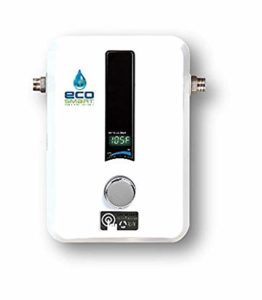

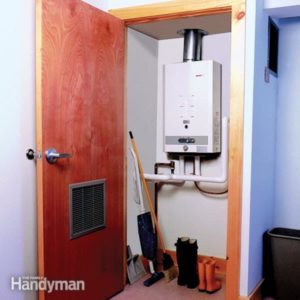



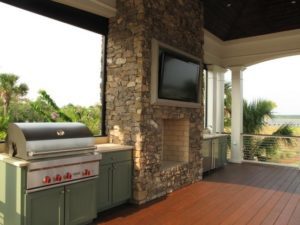
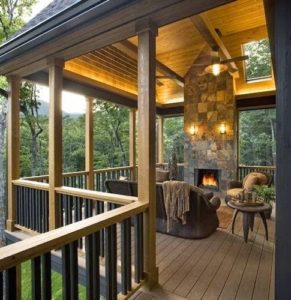 A wood-burning outdoor fireplace is the center of attention in this porch, and dozing, reading, and chatting are the orders of the day. An indoor-outdoor rug softens and defines the gathering space.
The brick in a courtyard and outdoor fireplace can come from old buildings that were torn down. The biggest issue with antique brick is there are several different sizes and it tends to get mixed up. You can set the brick in sand, rather than concrete, to give a relaxed and aged look. Plus, the sand helped level odd-size bricks.
Here are more beautiful outdoor fireplace areas to get your creative juices flowing!
A wood-burning outdoor fireplace is the center of attention in this porch, and dozing, reading, and chatting are the orders of the day. An indoor-outdoor rug softens and defines the gathering space.
The brick in a courtyard and outdoor fireplace can come from old buildings that were torn down. The biggest issue with antique brick is there are several different sizes and it tends to get mixed up. You can set the brick in sand, rather than concrete, to give a relaxed and aged look. Plus, the sand helped level odd-size bricks.
Here are more beautiful outdoor fireplace areas to get your creative juices flowing! 
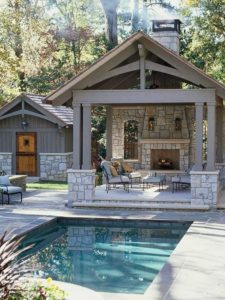 The Szabo Group offers first class real estate services to clients in the Scottsdale Greater Phoen
ix Metropolitan Area in the buying and selling of Luxury homes in Arizona. Award winning Realtors and Re/MAX top producers and best real estate agent for Luxury Homes in Scottsdale, The Szabo group delivers experience, knowledge, dedication and proven results. Contact Joe Szabo at
The Szabo Group offers first class real estate services to clients in the Scottsdale Greater Phoen
ix Metropolitan Area in the buying and selling of Luxury homes in Arizona. Award winning Realtors and Re/MAX top producers and best real estate agent for Luxury Homes in Scottsdale, The Szabo group delivers experience, knowledge, dedication and proven results. Contact Joe Szabo at 

:max_bytes(150000):strip_icc():format(webp)/wireless-speakers-and-home-theater-1846770-Final-5c45eeeec9e77c000175e978.png)






